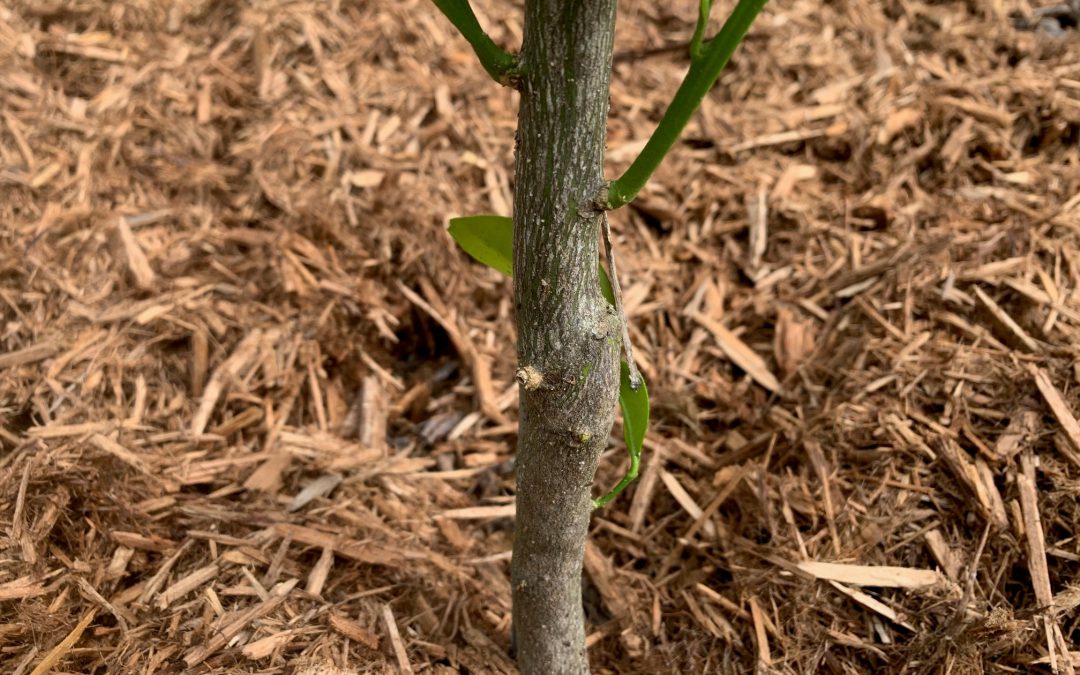
Video: Citrus Recovery and Pruning
Some citrus is recovering from our December 2022 hard freeze and pruning will be needed. Learn to identify your tree’s graft and how to prune away any rootstock material with UF IFAS Extension Escambia County.

Some citrus is recovering from our December 2022 hard freeze and pruning will be needed. Learn to identify your tree’s graft and how to prune away any rootstock material with UF IFAS Extension Escambia County.
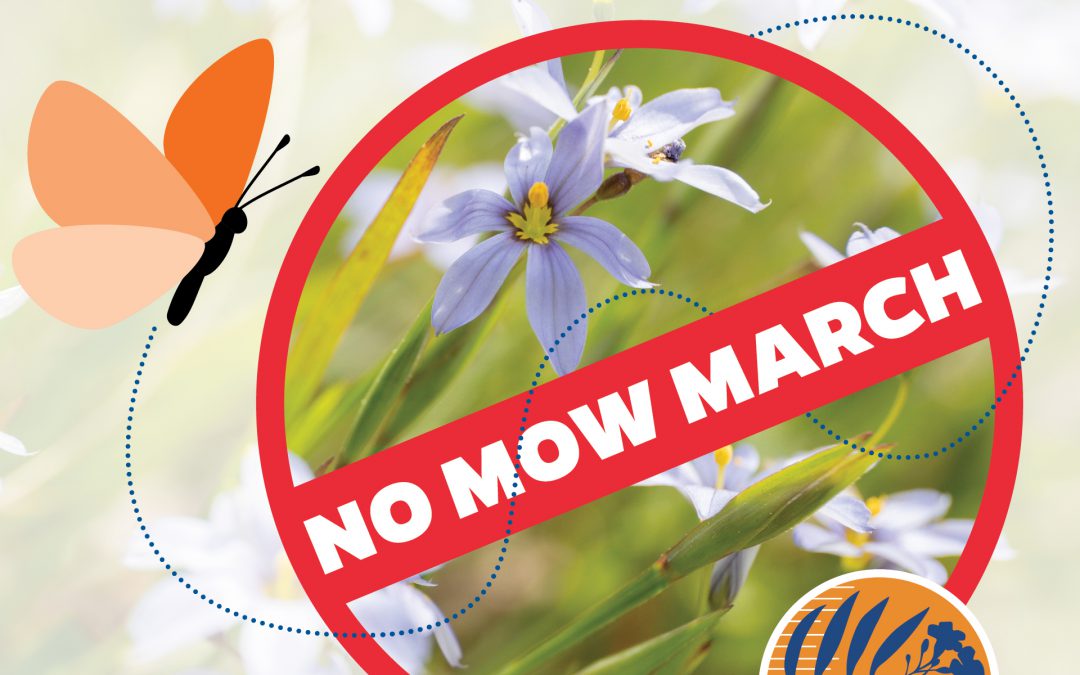
An activity during our No Mow March campaign was for participants to document flowers and pollinators from their landscapes. This activity was available through an INaturalist group specific to No Mow March. Although we only had 13 participants, they made 85 observations representing 50 species of plants and insects.
The photo that was selected as the favorite is the Clasping Venus’s Looking Glass, Triodanis perfoliate, by Martha W. This was around the Tallahassee, FL area. Martha received an electric edger, battery, and charger.
We hope to have more participants in our photo collection next year as we observe the plants and pollinators visiting our landscapes when we don’t mow.
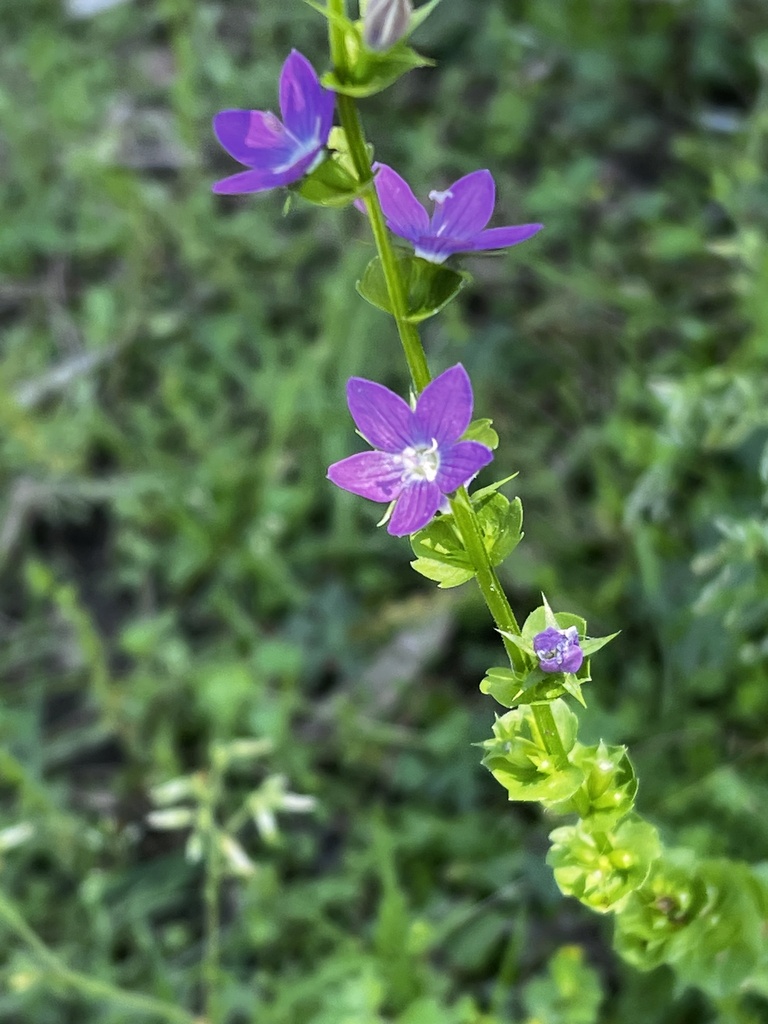
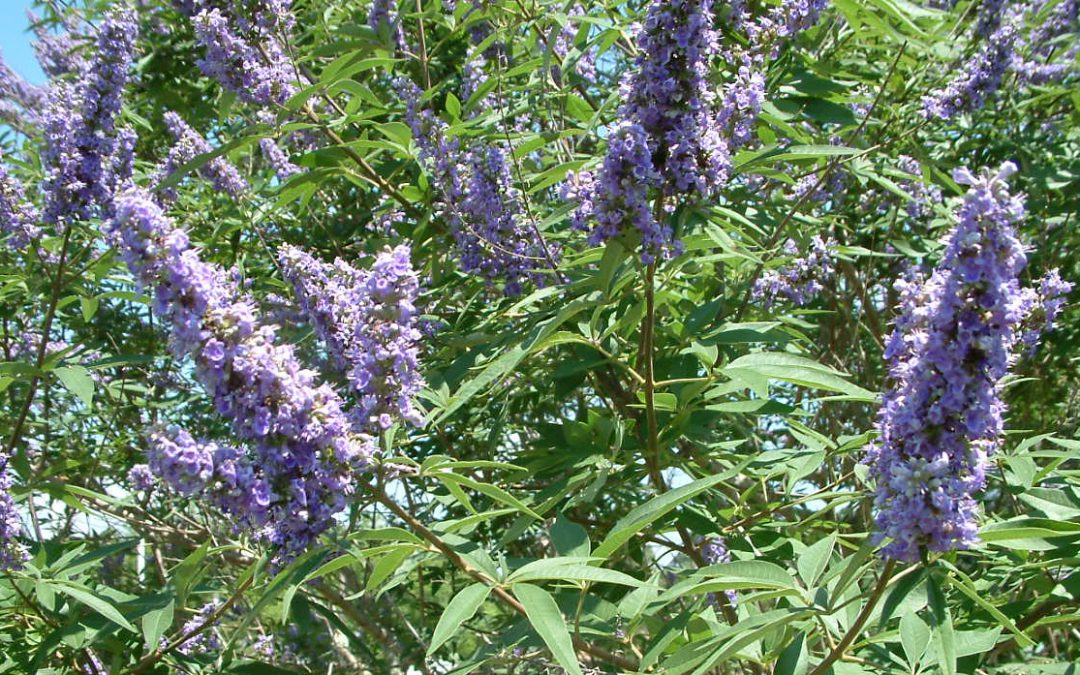
No Mow March was an awesome success this year! Together, by leaving some unmown areas of our lawns and landscapes, we helped create acres of additional valuable pollinator habitat in a critical time of the year. However, we can’t forget that there are still nine months remaining in which we can provide low-maintenance food and shelter for pollinators and other wildlife in our landscapes this year! The following are three of my favorite ultra-low maintenance pollinator friendly shrubs for Panhandle landscapes for summer and fall.
Chaste Tree (Vitex agnus-castus)
Chaste tree or vitex, an outstanding Florida-Friendly Landscape shrub/small tree, provides many aesthetic and wildlife landscape benefits throughout the growing season. Vitex features attractive grayish-green foliage and grows into a nice, rounded shape (10-15’ tall). However, the primary draw is its summer/fall flower show. Sporting striking masses of purplish-blue flowers for months on end until frost, Vitex is a pollinator magnet. Bees, butterflies, hummingbirds, and all manner of other pollinators visit vitex when in bloom and birds frequent the shrub in the fall to feed on its seeds. Simply select a site with full sun and well-drained soil and Vitex will reward gardeners and pollinators for years to come.
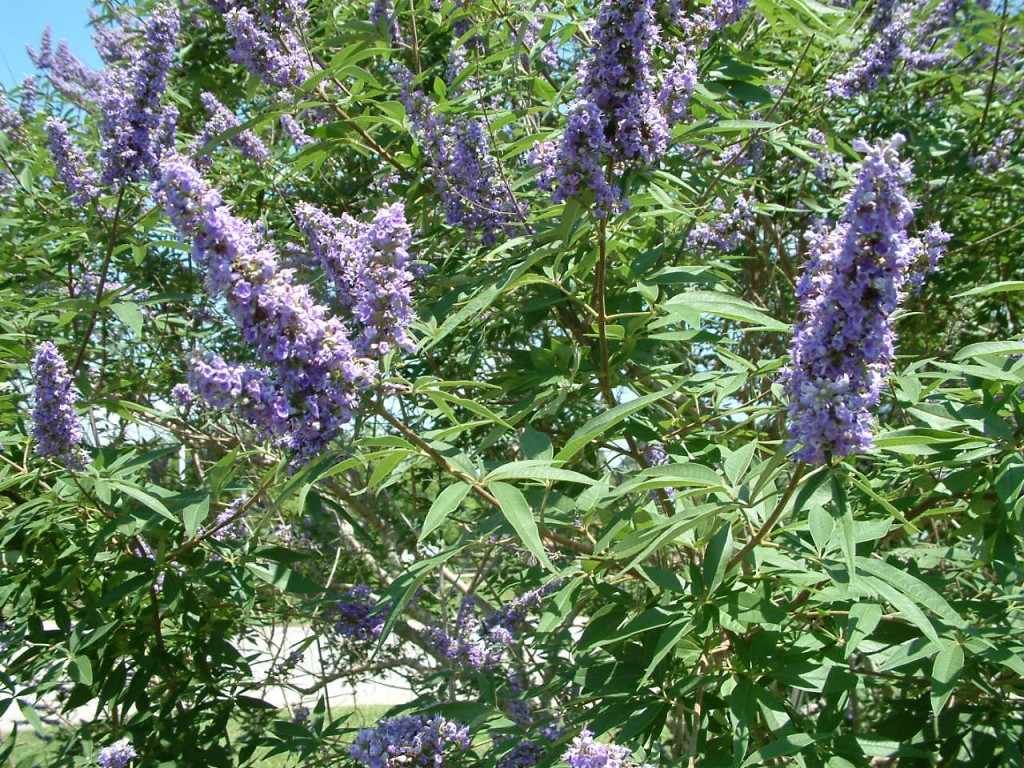
Firebush (Hamelia patens)
Firebush is a showstopper for both passers-by and pollinators. This sorta native shrub (Florida native but does not occur naturally in the Panhandle), is a prolific producer of tubular, bright-red flowers from late spring-through frost. These flowers are a preferred nectar source for many species of butterflies, Zebra longwing and Gulf Fritillary included, and a favorite of hummingbirds. Like vitex, birds also enjoy feeding on the berries that follow firebush flowers. In the Panhandle, firebush tops out at around 6’ tall and about as wide and is often killed back to the ground by frost, regrowing rapidly each spring. Firebush has no real insect or disease issues in landscapes and prefers the same sites as Vitex and will appreciate as much sun as you can give it and well-drained soil.
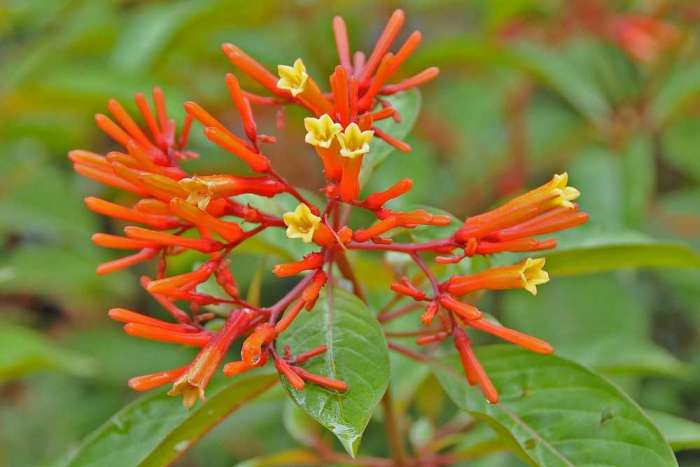
American Beautyberry (Callicarpa americana)
American beautyberry, or just Beautyberry as it is commonly referred to, is a lovely little deciduous shrub native to all parts of Florida and provides benefits to all manner of landscape wildlife. Though primarily known for its bird-attracting, vibrant purple berry clusters that appear late summer through fall, Beautyberry is a host plant for several butterfly/moth species and its dainty, pink flowers are an early summer favorite of many bees! Beautyberry grows 5-7’ in height and is extremely adaptable in landscapes as well, thriving in sun or light shade and many different soil conditions.
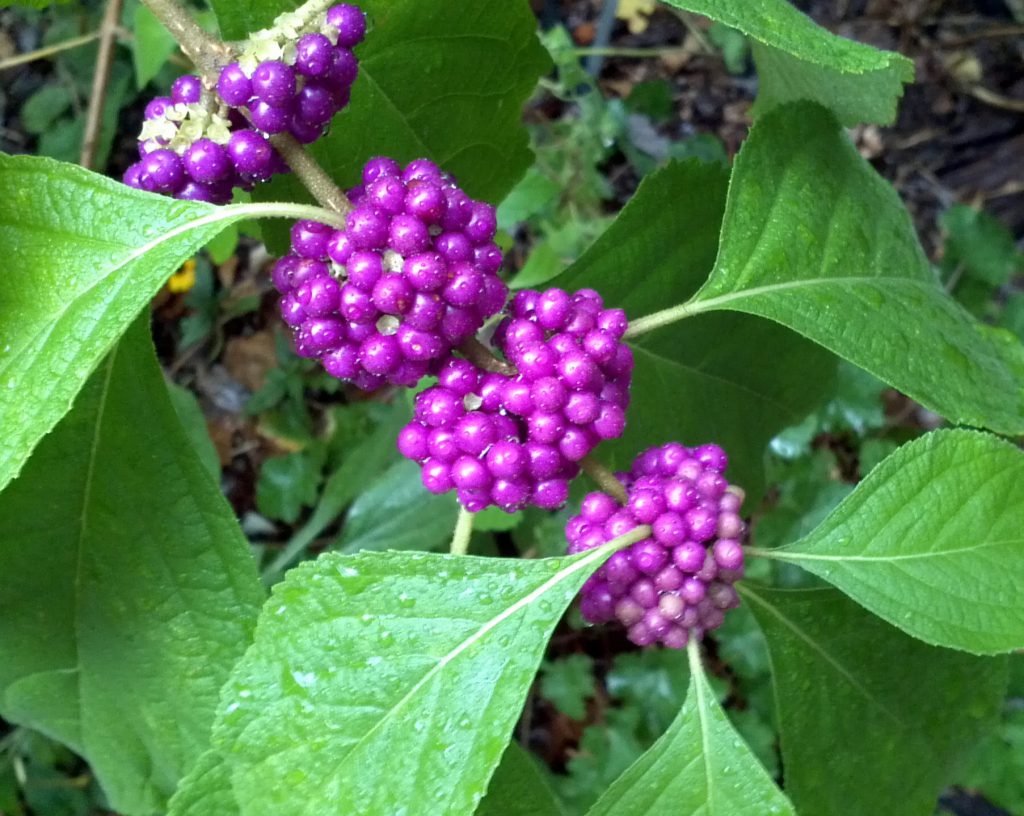
It’s important to remember that providing pollinator/bird food and habitat in lawns and landscapes is not a one month event, but a year round commitment. Reducing mowing frequency, reducing pesticide use, planting native trees, including host and nectar annuals/perennials in landscape beds, and yes, planting native fauna friendly shrubs like vitex, firebush, and American beautyberry are all part of maintaining a pollinator-friendly yard! Plant one (or several) today! For more information on creating pollinator habitat in landscapes or any other horticultural topic, contact your local UF/IFAS County Extension Office.
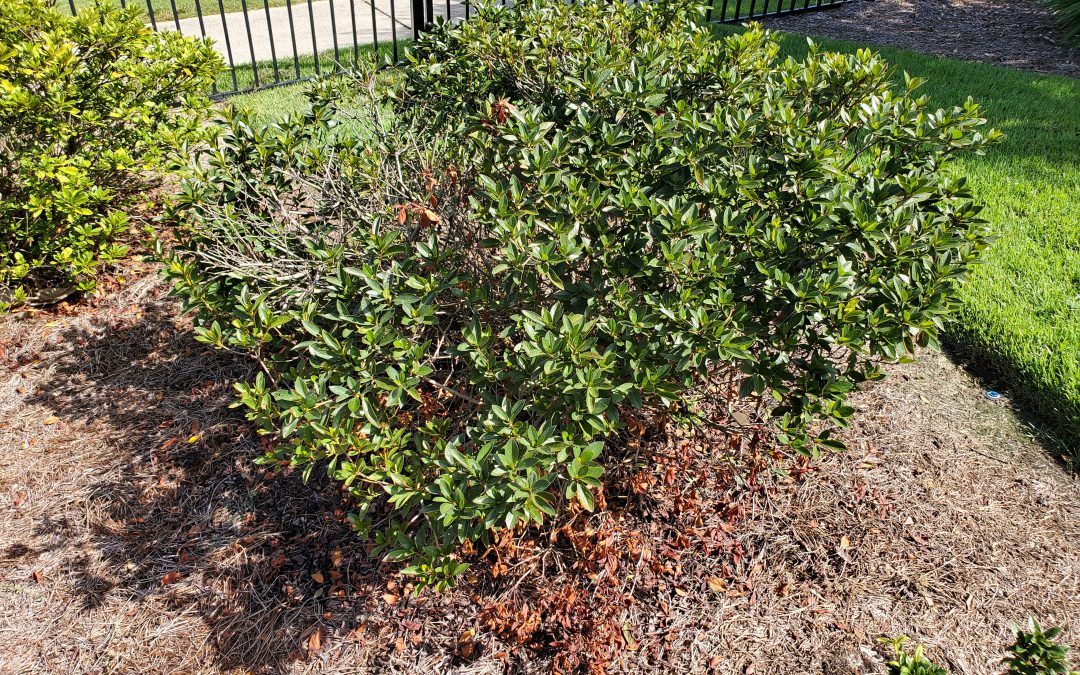
As the weather warms up, people will be outside tending to their landscapes more often. Part of that tending involves a simple thing that everyone knows plants need: water. And that is correct! Plants DO need water, and most of them need it regularly. However, even with the sandy soils in our area that drain quickly, it is possible to overwater your plants!
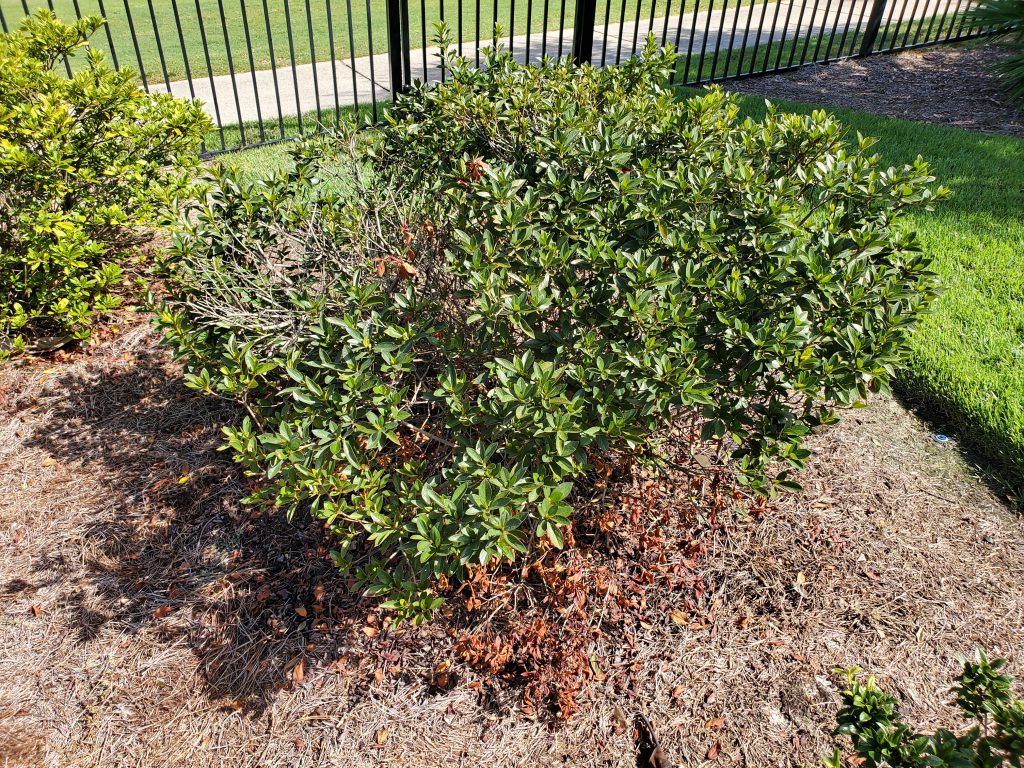
It is not uncommon to have a dry spell in the spring or fall in North Florida. Weeks may pass by with little or no rain, until the summer rains settle in. People may set their irrigation systems to deal with the lack of rain, but then forget to change the settings once the water isn’t needed. When plants receive too much water, we see a number of things happen. Trees and shrubs may appear to be deficient of nutrients, displaying yellowed leaves. They may die back and have a patchy appearance. Sprinklers that run constantly and splash water on leaves may increase the number of fungal diseases that plants get. Lawns that stay too damp may start seeing moisture-loving weeds such as dollarweed pop up in profusion. Luckily, we do have some guidelines for how much we should water.
For lawns or landscape plants, it is important to know what plants you are dealing with. Different plants have different needs when it comes to irrigation. Plants should be grouped by their water (and light) needs in a landscape, and irrigation zones should be set with those groupings in mind. Plants that enjoy or tolerate more water include wax myrtle, yaupon holly, swamp sunflower, swamp milkweed, pond cypress, and river birch. Others enjoy drier and well-drained soils, such as yucca, oleander, false rosemary, and turkey oak. To help determine the cultural needs of various plants, try consulting the Florida Friendly Landscaping Guide to Plant Selection and Landscape Design or the Florida Native Plant Society’s website.
When deciding whether or not to irrigate, one thing to pay attention to is the weather. All too often sprinkler systems will continue to run despite the weather – even in the middle of a thunderstorm! Install a rainfall shutoff device or make sure yours is functioning properly to avoid this. Overwatering can lead to unhealthy plants, disease issues, and weed problems.
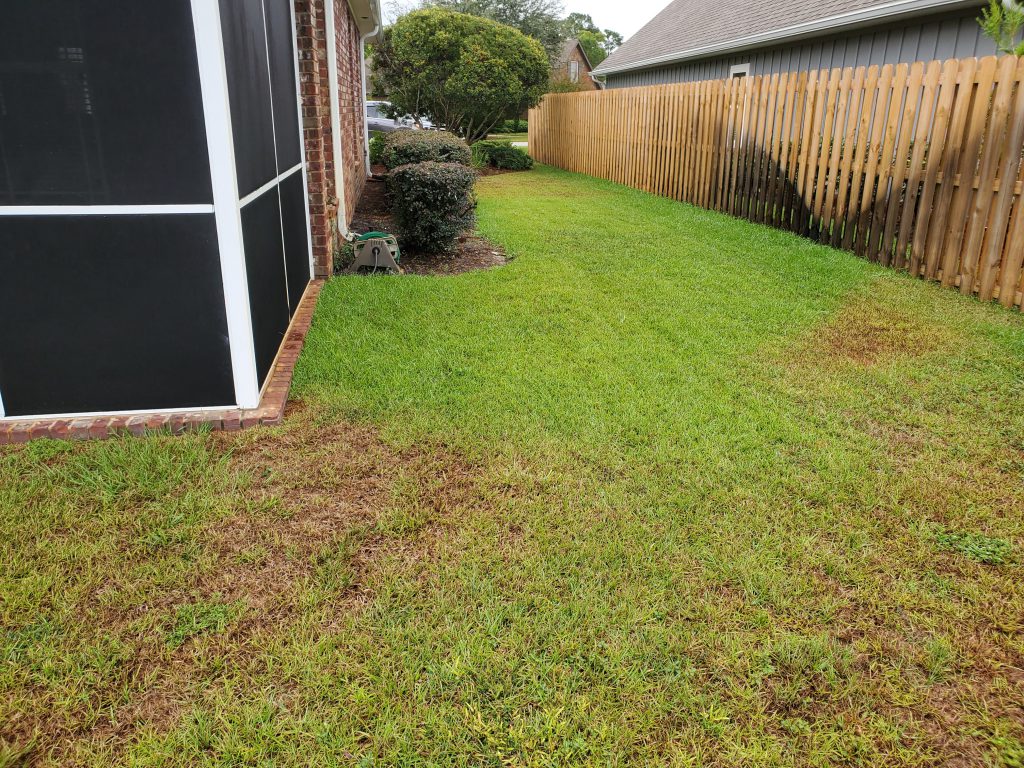
It can help to learn what a thirsty lawn looks like. Turfgrass that needs a drink will fold up its leaves, become dull bluish-green in color, and footprints will remain instead of the grass springing back. When signs of drought stress are evident, it’s time to water.
How much to water? The recommended amount is ½ to ¾ inch of water per application. Different irrigation emitters put out different amounts of water over time, so some measurement is necessary. Put out some small, straight-sided cans such as tuna or cat food cans in the area to be measured, run the irrigation for 15 minutes, and then measure how deep the water is in the cans. If you’ve collected ¼ inch of water in that time, you’ll know that you need to run the system for 30-45 minutes to give your lawn a thorough watering.
For more watering tips, there is plenty of information available. Check out these links:
Managing Landscape Irrigation to Avoid Soil and Nutrient Losses
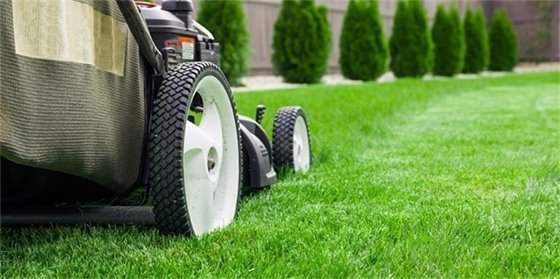
It’s early spring which means time to pull the mower out of the garage and turn that engine over for the first time in months. As with most years, this task may be easier said than done. You fill the tank, check the oil, then pull that string hoping to hear that engine hum to life. Instead with a disappointing spurt, it putters back to sleep. Discouraged, you bounce between the carburetor and spark plug just knowing there is a simple solution. Finally, everything gets cleaned then reassembled, you pull that cord but this time the mower springs to life. As you stand there feeling the cold air on your skin you survey the lawn and think about how little you’re up for this effort today. Why not take another month off of this lawncare duty by partaking in your Panhandle horticulture agents’ “No-Mow March” initiative. Doing so can not only save you the early season frustration outlined above but may help you hold on to a little bit of your hard-earned dollars.
It’s time we talk about the price of cutting your grass. A universal expense should you push your mower or ride on top is gasoline. Have you ever taken a minute to determine how much it costs to mow your lawn across the course of a season? For our purposes here, we’ll consider a single season to be March through September. Assuming you mow weekly as you should, that accounts for 28 sessions. On average, assuming your grass is dry, a walk behind mower will burn through about a liter or roughly a quarter gallon per acre of mowed lawn. With gas prices in Florida running at $3.45 per gallon according to AAA, that will cost $24.15 to cut your lawn across a single mowing season. Riding mowers exacerbate this even more burning through half to three quarters of a gallon per acre mowed. To be fair, they have a bigger job being as they must propel their own weight and that of the operator. In this instance, the cost of gas can run you anywhere between $48.30 and $72.45 in a season. All of this assumes that your mower is running efficiently. Why not cut yourself and your wallet a break and avoid mowing at all early in the season. Sit back and relax for a while longer this year and skip mowing in March and save yourself a little time and money. Your neighbors may complain. Tell them you’re helping both your back and the bees.

Early spring begins with emerging pollinator species. They spent the winter months holed up in their nests bunkered against the cold weather. Around March they stick their heads out and begin looking for nearby nectar sources. A good place to start is with the flowers which have popped up in your yard over winter. We see them as weeds, but to these titans of pollination they might just be the key to life.
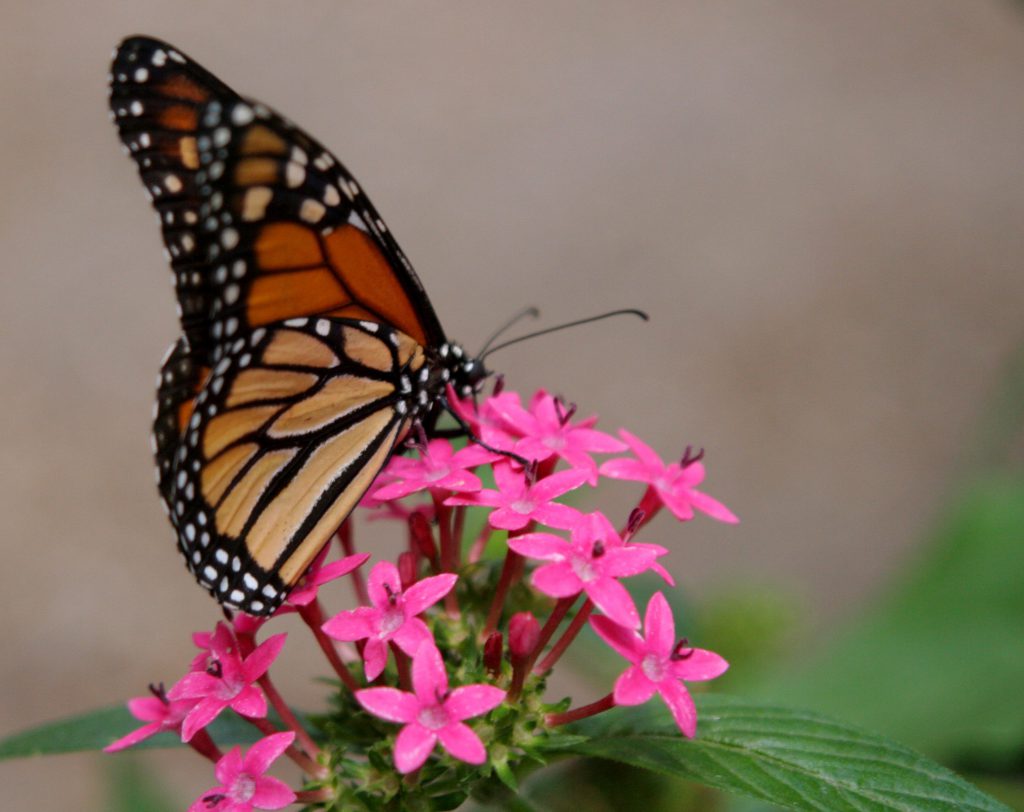
Information on “No-Mow March” may be found by heading over to our information page located here. Information on pollinators may be found on these Ask IFAS documents or by contacting your local extension agent for this and any topic regarding your gardens and more.